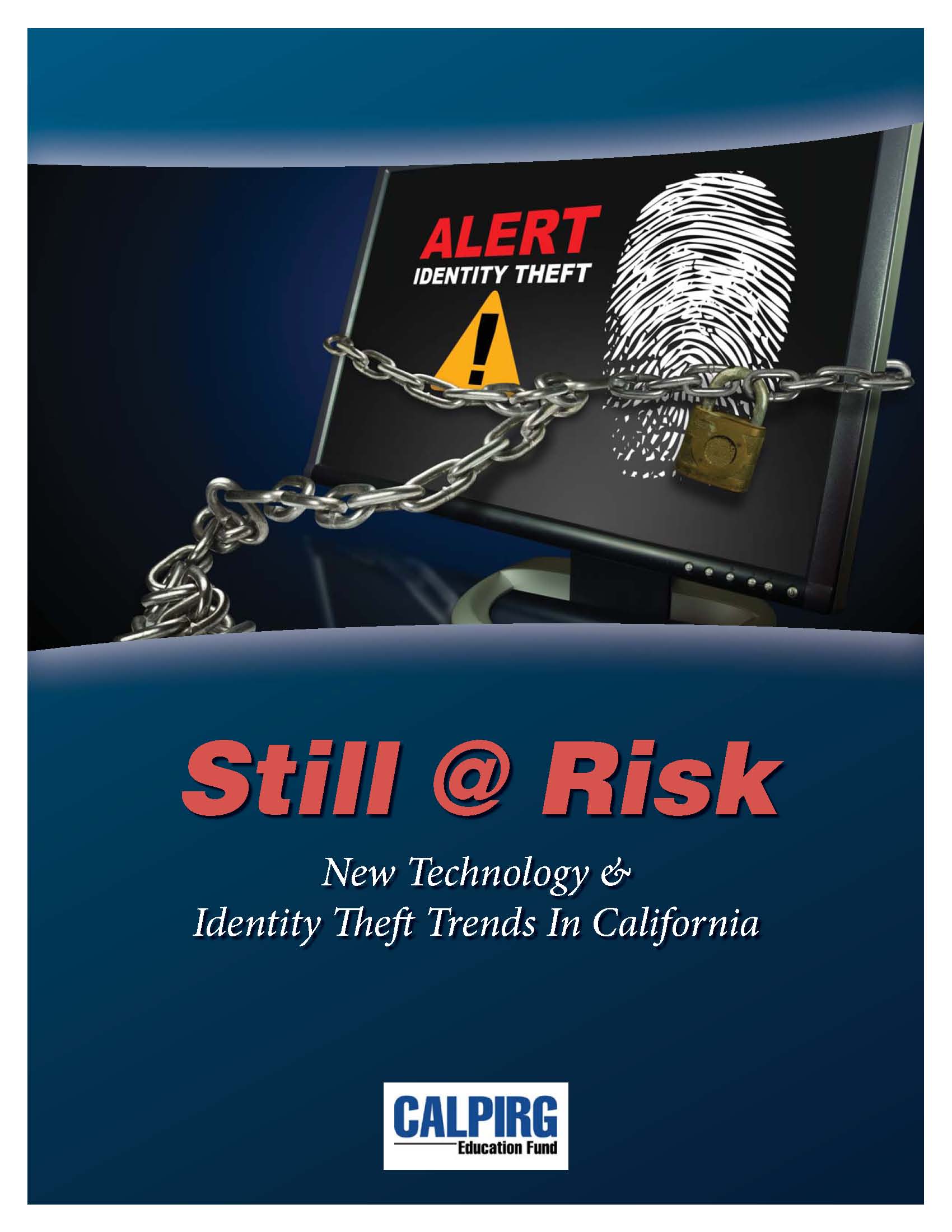Still @ Risk
New Technology & Identity Theft Trends In California
New Report on technology & identity theft shows that California victims lost more money in identity theft cases Investigated in 2011 than in previous year.

Downloads
CALPIRG Education Fund
Executive Summary
Identity theft is the nation’s leading method of fraud in the 21st century, with the highest number of complaints nationwide originating here in California.[1] While old practices such as mail theft and “dumpster diving” continue, consumers today face new threats as technology advances and new opportunities develop for criminals. These threats include the use of card-skimming devices, abuse of Bluetooth technology, key-logging malware, and attacks on unsecured WiFi networks.
California’s consumers face an array of threats to their identity on multiple fronts. A Federal Trade Commission (FTC) report recently noted that for 12% of victims, criminals used more than one method to steal their identity. The FTC findings further reported that 63% of all identity theft victims were initially engaged online by a fraudulent email or Internet web site.[2]
A review of data provided by the California High Technology Theft Apprehension and Prosecution (HTTAP) program shows that in 2011 the average dollar loss per victim was $786, which was a significant increase from the previous year’s average of $82.[3] FTC data also indicates that the average dollar loss per victim in California during 2011 was 4.8% higher than in 2010.[4] Combined, the data suggests that identity theft is costing consumers more today than in years past.
The increased consumer cost is mostly due to the rise in “new account fraud,” where criminals use a victim’s identity and good credit to create new accounts, which are then used to fraudulently obtain goods and services. This type of financial identity theft takes longer to detect and results in significant financial loss for both victims and businesses. Market estimates place the average cost for new account fraud at $3,197 per incident.[5] Our report highlights that costly new account fraud is on the rise throughout the United States, accounting for 46% of identity theft based fraud in 2010, up from 39% in 2009.[6]
Despite significant progress in recent years by both law enforcement agencies and the private sector there is still room for improvement in the effort to limit identity theft. California state law prohibits organizations, both private and public, from using a Social Security number as a personal identifier and from publicly posting or displaying that number.[7] Yet organizations continue to collect and store Social Security numbers, unnecessarily placing consumers at risk of identity theft. Authorities should investigate the present usage of Social Security numbers by government agencies and private business to determine if alternative means of identification can be used instead. This will reduce the amount of Social Security numbers collected and reduce risks for consumers.
Policy-makers should adopt statewide minimum standards for safeguarding personal data by business and other private entities. In addition, California should establish a statewide standardized identity theft reporting mechanism. Closing the existing information gap will provide more accurate insights into identity theft trends and levels of occurrence. Establishing a statewide identity theft database will empower law enforcement agencies and consumer groups with better data and enable them to craft better polices to counter identity theft.
[1] High Technology Crime in California FY 2010-2011, High Technology Crime Advisory Committee, January 2012. p.5.
[2] Sentinel Network Data Book, January-December 2011, Federal Trade Commission, February 2012, p.9.
[3] High Technology Crime in California FY 2010-2011, High Technology Crime Advisory Committee, January 2012.
[4] A comparison of FTC data show that the dollar loss from identity theft in 2011 was $210,644,569 compared to $200,997,812 in 2010. Sentinel Network Data Book, January-December 2011, Federal Trade Commission, February 2012, p.87.
[5] 2012 Identity Fraud Report: Social Media and Mobile Forming the New Fraud Frontier, Javelin Strategy & Research, February 2012.
[6] 2011 Identity Fraud Survey Report: Consumer Version, Javelin Strategy & Research, February, 2011, p. 5.
[7] See Cal. Civ. Code ? 1798.85 (2001).
